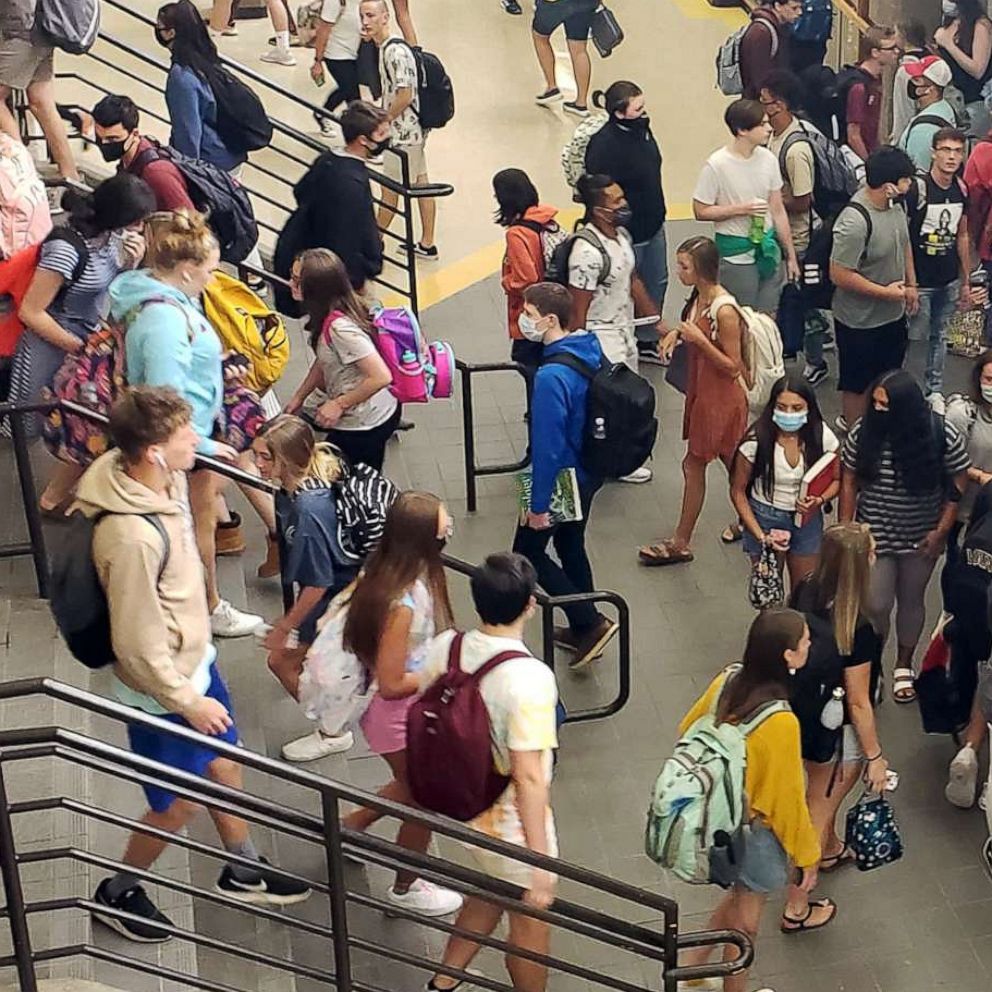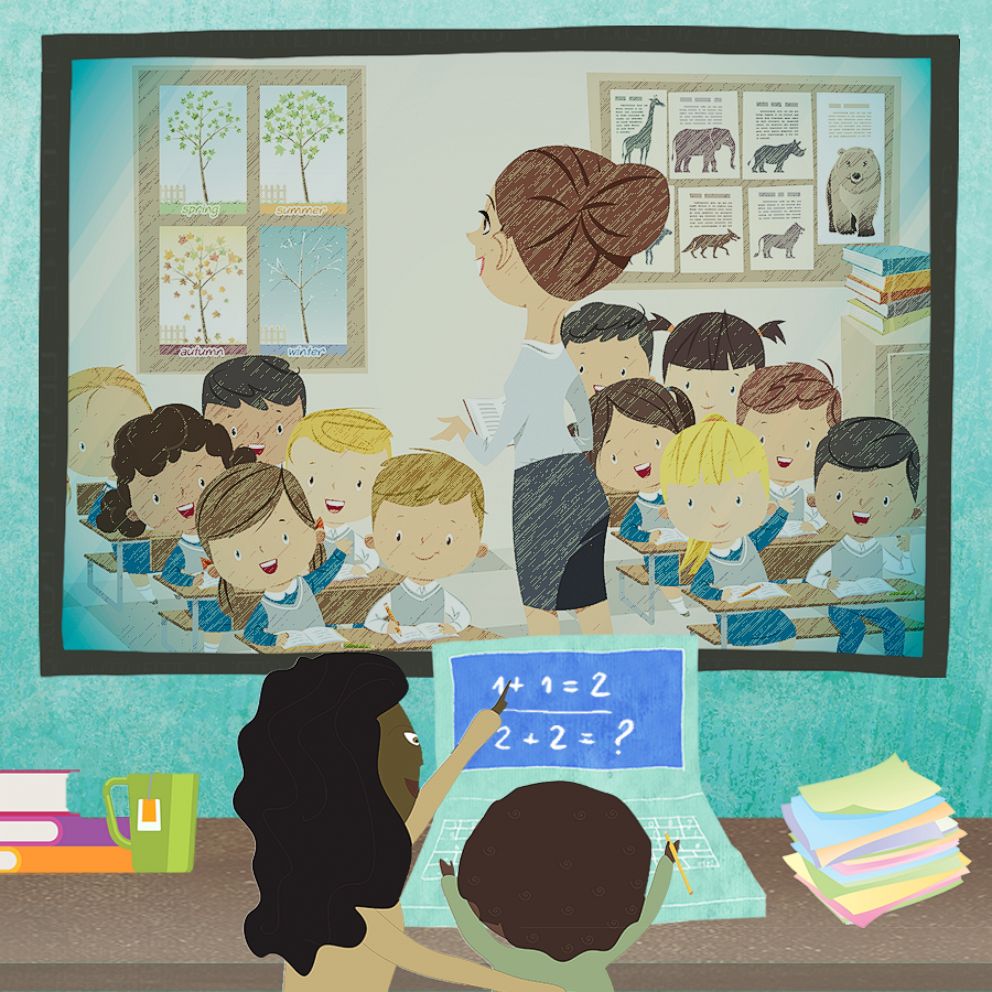Distance learning back-to-school expenses on the rise: Here's how families can save
More students are learning remotely due to the COVID-19 pandemic.
As summer comes to an end, and the debate over reopening schools continues, many parents around the country are preparing for their children to learn remotely, which means having to budget for additional expenses.
Back-to-school expenses are expected to rise almost 30% this year compared to last year, hitting a record $33.9 billion, according to the National Retail Federation.
"With many children learning from home, families may not receive the same access to supplies and technology as they normally would while in school. Some public school districts say they'll provide laptops and calculators, but supplies are often limited, requiring many families to budget extra for these expenses," Farnoosh Torabi, financial expert and contributing editor to NextAdvisor.com, told "Good Morning America."
According to a 2020 back-to-school survey from Deloitte, 38% of shoppers indicated high financial concern over the ability to pay school-related expenses due to remote learning. Experts expect some of the biggest financial impacts to come from daily meals, technology and additional school supplies.
From apps to new programs and deals, here are ways to save on all of those added back-to-school expenses:
Meal savings
Almost all food categories have seen price spikes at some point since February as a result of the pandemic, according to the Bureau of Economic Analysis, and with the loss of school breakfasts and lunches, a recent survey from Credit Karma found that 27% of parents say covering those expenses has put them into debt.
One resource parents can utilize are local food rescues. Many major food corporations have donated to or created programs to help feed children and combat food insecurity through these organizations. Earlier this month, Cheerios donated $1.3 million to No Kid Hungry, a nonprofit working to end childhood hunger and today Danone's Two Good announced the launch of its One Cup, Less Hunger program partnering with food rescue organizations City Harvest and We Don't Waste to donate one cup of food for each cup of yogurt purchased. Partnerships like these proving to be crucial for food banks during the pandemic.
"Since the start of the COVID-19 crisis, the need for emergency food has skyrocketed across New York City. We couldn't do what we do -- especially during these uncertain times -- without the support of partners like Danone North America and its Two Good brand. Over the next 12 months, we will rescue and deliver 109 million pounds of food for New Yorkers in need, which is the most food our organization has ever rescued in a year," City Harvest told "Good Morning America."

Families can find a local food bank by searching their zip code at FeedingAmerica.org.
And when shopping in a grocery store, sites like MyGroceryDeals.com can help you find the best deals in your neighborhood, while apps like Ibotta and Receipt Hog allow you to earn cash back on hundreds of grocery items.
Torabi also suggested signing up for grocery rewards programs and buying store-brand products to save as much as 50% or more.
Tech savings
Families are expected to spend an average of $400 for computers and hardware, which is a 38% increase from last year, according to the 2020 back-to-school survey from Deloitte.
"For more affordable laptops and technology, shop the refurbished section, where you can usually get 15% off gently used items that often still carry a warranty," Torabi said.
Walmart, Staples and Best Buy are among retailers that all offer refurbished electronics at a discounted rate. Additionally, nonprofit websites like Notebooksforstudents.org offer special discounts for students on laptops from brands like Apple, Lenovo, HP and Dell.
But hardware isn't the only additional cost: 16.9 million students still lack access to the internet at home, according to a report from Future Ready Schools. While prices vary across the country, the average internet price ranges from $50 to $100 a month. Some major providers are creating programs to help with those costs. Comcast recently launched Internet Essentials offering broadband internet service at $9.95 per month with the option to purchase a heavily subsidized computer for low-income students. First-time users also get 60 days free. Verizon, AT&T and Cox are also offering discounts for students needing to access the internet from home.
School supply savings
More than 17% of parents surveyed by Ipsos report their ability to afford their children's school supplies has worsened over the last month.
"To save on back-to-school costs don't guesstimate the shopping list. You're more likely to overspend. Instead, connect with your child's teachers to know exactly what you'll need -- and what you can skip," Torabi said. "Buy enough for the first couple of months and replenish on an as-needed basis to curb spending."
Torabi also recommended teaming up with neighboring families to buy items like paper, pencils and notebooks in bulk and split the cost. Parents can utilize websites like Orientaltrading.com and Discountschoolsupply.com to find bulk discounts. Additionally, downloading a browser extension like CamelCamelCamel or Honey allows users to compare prices and find coupons automatically when shopping online.
And finally, for free supplies, qualifying families can utilize organizations like the Salvation Army and Boys & Girls Clubs of America.






